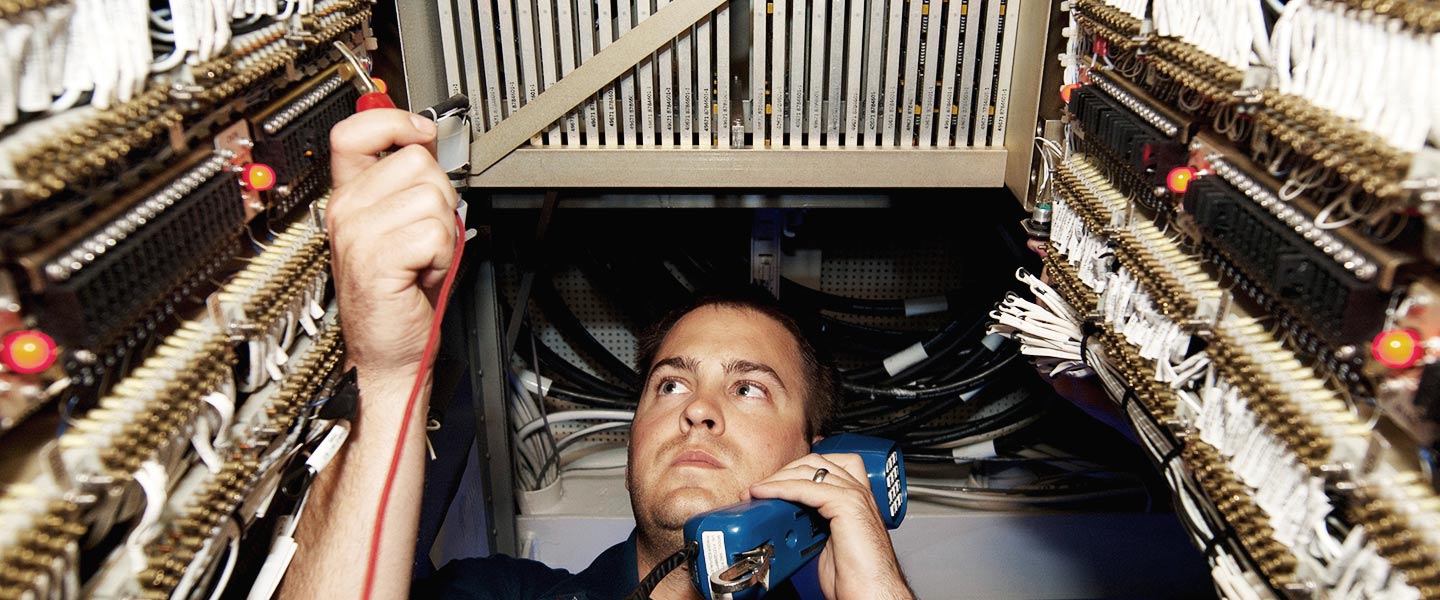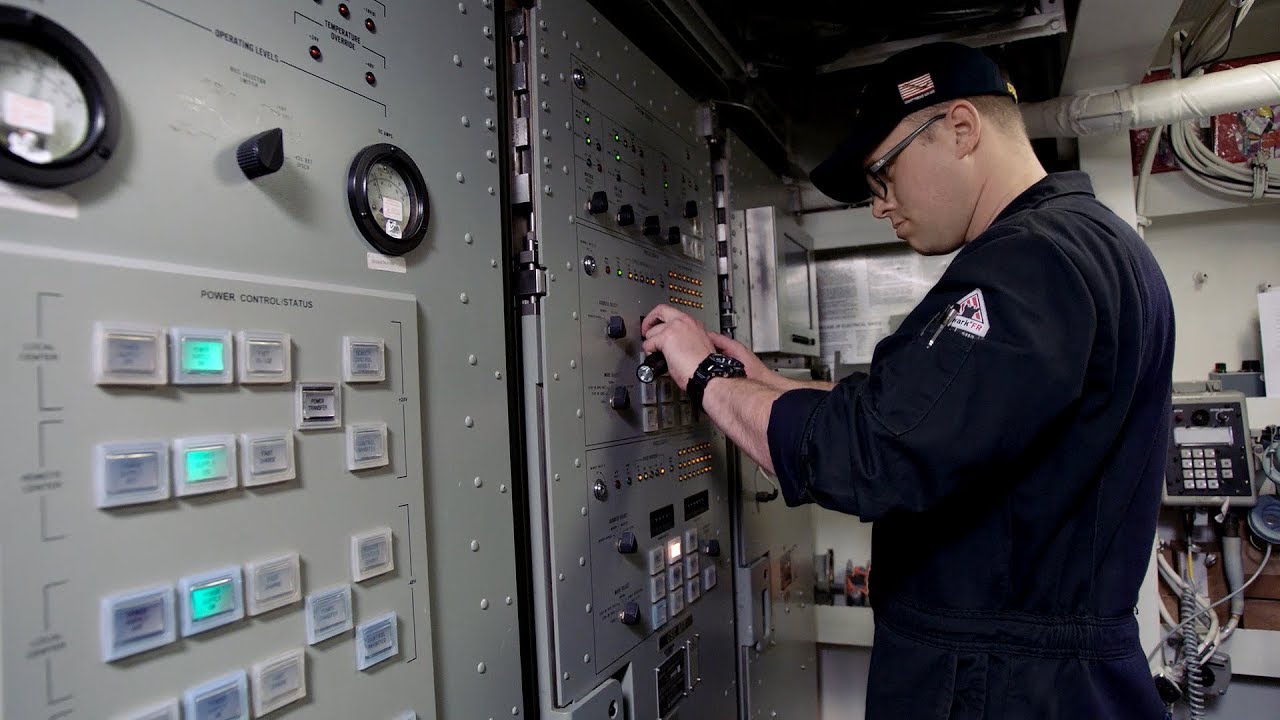What to Expect
More Information
Responsibilities
Interior Communications Electricians install, maintain and repair the equipment needed for interior communications within ships and shore facilities. From TV entertainment systems to ensuring that all communication systems from the bridge to the engine room, you’re the ship’s jack-of-all-trades. Your responsibilities could include:
- Maintaining and repairing interior communications systems
- Preparing and interpreting blueprints, wiring diagrams and sketches
- Installing and inspecting dry cell and storage batteries
- Recharging wet cell batteries
- Testing interior communications and gyrocompass equipment
- Installing telephone and other communications circuits, boxes, switchboards and bell buzzer systems
- Maintaining plotters and dead reckoning equipment, TV operating systems and shipboard navigation equipment
Work Environment
We communicate everywhere, so Interior Communications Electricians are able to operate at sea or ashore in many different environments. While most of their work is performed indoors, it may be in a climate-controlled, shop-like environment. The IC rate is very technical, with Sailors needing to work on all kinds of electronic and communication equipment.
Training & Advancement
Upon completion of initial training at Recruit Training Command Great Lakes, (known as Boot Camp), those pursuing an Interior Communications Electrician role report to Advanced Technical Training and Class “A” Technical School in Great Lakes, IL, where you’ll receive 21 weeks of formal Navy technical training. Here, you will develop a working knowledge of basic technical documentation, knowledge and skills of electricity and electronics, basic mechanical theory, electrical math, basic schematics and AC/DC circuits.
Some Interior Communications Electricians who graduate from "A" school go on to advanced training courses such as gyrocompass and advanced TV maintenance. Others are assigned to duty stations where they can continue learning their rating through on-the-job training. Once you’ve finished schooling, you’ll spend the rest of your career alternating between service at shore commands and aboard ships in the U.S. and overseas.
Promotion opportunities are regularly available but competitive and based on performance.
Post-Service Opportunities
Specialized training received and work experience gained in the course of service can lead to valuable credentialing and occupational opportunities in related fields in the civilian sector.
Education Opportunities
Beyond offering access to professional credentials and certifications, Navy technical and operational training for an Interior Communications Electrician can translate to credit hours toward a bachelor’s or associate degree through the American Council on Education.
You may also continue your education through undergraduate degree opportunities like the Navy College Program and Tuition Assistance and the Post-9/11 GI Bill.
Qualifications & Requirements
A high-school diploma or equivalent is required to become an Enlisted Sailor and Interior Communications Electrician in the Navy. ICs must be U.S. citizens eligible for security clearances. Normal color perception is required for this rating.
A good IC must also have above average math skills, good dexterity, great speaking skills and an interest in technology and information.
General qualifications may vary depending upon whether you’re currently serving, whether you've served before or whether you've never served before.
Part-Time Opportunities
There are part-time opportunities available as an Interior Communications Electrician.
Serving part-time as a Navy Reserve Sailor, your duties will be carried out during your scheduled drilling and training periods. During monthly drilling, Interior Communications Electrician in the Navy Reserve typically work at a location close to their homes.
For annual training, Interior Communications Electrician may serve anywhere in the world, whether on a ship at sea or at bases and installations on shore.
Take a moment to learn more about the general roles and responsibilities of Navy Reserve Sailors.
Most of what you do in the Navy Reserve is considered training. The basic Navy Reserve commitment involves training a minimum of one weekend a month (referred to as drilling) and two weeks a year (referred to as Annual Training) – or the equivalent of that.
Interior Communications Electricians in the Navy Reserve serve in an Enlisted role. Before receiving the ongoing professional training that comes with the job, initial training requirements must be met.
For current or former military Enlisted servicemembers: prior experience satisfies the initial Recruit Training requirement – so you will not need to go through Boot Camp again.
For those without prior military experience: you will need to meet the initial Recruit Training requirement by attending Boot Camp in Great Lakes, IL. This training course will prepare you for service in the Navy Reserve and count as your first Annual Training.

